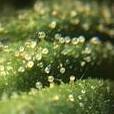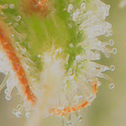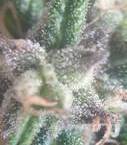Leaderboard
Popular Content
Showing content with the highest reputation on 07/28/2021 in Posts
-
9 points
-
4 weeks into flower. 6 to go. Just water for now. Turned the blumats off. Want to feed something over the weekend. Thrips are taking over and the BioSF nematodes will only arrive next week. I have some extra fly traps going untill then.9 points
-
8 points
-
7 points
-
As you guys read all the crap i post ^^ I grabbed the cam and sat in the dark for you Picts standing 28 July 17.40, dark since 10.00. 20.3 degrees C and 52% humidity So far so good.. if nothing goes cold.. should be done in 5 weeks6 points
-
5 points
-
5 points
-
Day 5 Week 12 Update Got nothing ^^ Climate hovers around 39-53% humidity and 19-23 degrees temperature Tarryn Sisa5 points
-
5 points
-
I reckon if she (hopefully ) grows into this huge tree with a bountiful harvest you'll have to send all us supporters a sample4 points
-
4 points
-
4 points
-
@ORGANinc. The secret sauce is to properly chelate the elements, before they come into contact with the roots and foliage. Alginic acid and mannitol are both chelating agents and are constituents of kelp. As you know, kelp is closely related to algae. It looks like a good product from Greenhouse, but why is it R2100 for a kg There's a few ways to improve the chelatiin, depending on your style of cultivation. Compost holds onto nutrients and the microbes cycle the nutrients. A minimum of 20 % organic matter in your medium is a great way to achieve this balance. A teaspoon of well made worm castings contains 50,000 different species of microbes. Less fertiliser is required if its assimilated into an available form and also buffered by carbon. Magnesium sulphate + fulvic acid = magnesium fulvate. A lot of sulphate compounds are approved for organic use, but they can be improved exponentially when mixed with humates. I use gypsum with my worm castings. The calcium is then synthesized into a chelated compound, called calcium humate. Calcium is responsible for delivering 7 other elements into the plant tissue. @PsyCLown I think that using these myco products is a better strategy than using toxic fungicides and pesticides. Treating the seed to prevent damping off is a wise move, in the field. Especially if the soil is marginal and needs improving. Your label says 150 g per hectare, but Indoors where the seed are planted individually, in a disease free environment then I don't think it makes much difference. The row on the left is the control, next 3 have had plant matters myco and the 3 on the right side had mycoroot. Trichoderma species are biotrophic mycoparasites, but they can turn necrotrophic. If your trichoderma turns necrotrophic, it will then kill off the harmful Fusarium, but it doesn't revert back into the biotrophic state. Once its in seek and destroy mode, your beneficials are also at risk. https://en.m.wikipedia.org/wiki/Mycoparasitism However, in some combinations, the parasite may live during its early development as a biotroph, then kill its host and act more like destructive mycoparasites in late stages of parasitism.4 points
-
So finally, after 3 weeks they are flowering. The runt #1 Still just rainwater with the organisoilux Sent from my iPhone using Tapatalk4 points
-
4 points
-
4 points
-
4 points
-
3 points
-
To be honest.....I wouldn't even flip yet. They're on a roll now.. let them grow. You have plenty more space to fill there. Top the one at the back and only worry about cleaning them when there are alot more leaves. Leave them for another week.....or two. Promise you won't regret it.3 points
-
Welcome welcome. Slowly building up is the way. This was me one year ago Sent from my iPhone using Tapatalk3 points
-
3 points
-
3 points
-
Pressed version. Best hash i made so far. Creamy texture, very aromatic and 2 dudes smoking for over 30 years went to bed after the test joint Purely made from indoor Gelato.3 points
-
The reason our prices are good is because we keep our costs down and we believe in offering old-school value. No point ripping people off when you're trying to build a long-term business. Of course soil is not exactly the easiest thing to transport around the country. Ideally we would like to have agents around the country who can stock around R5 - R10k of product per delivery on consignment, and then make some extra cash marking it up for individual retail sales. But I don't want to hijack this thread further, so will place a classified advert for this.3 points
-
Eish! Sorry capn!! Look at me slipping at the end!! Coe now Richard you're better than that Alright so full on flower pom poms now and so far so good. Must note they the cola leaves on most peeps flowering plants come out small and aren't really getting much bigger... Not sure if this is a fault of my own or what, but yea, just an observation.3 points
-
2 points
-
2 points
-
Update: Week 4.5 of flower Ok, quite a bit more happening in few days since the last photo @TotemicI cant see any light leaks... With my lights on full, and all other lights off I cant spot any signs of light coming out or under the tent. Ideally I'd climb in the tent and do it that way round too, but its a bit tricky with the raised floor. Perhaps I'll try make a plan this weekend. I've also check the timer and it seems to be working fine, no accidental on periods. And when I randomly check during the day its always off during the times I'd expect. I wont rule issues out completely, light can be sneaky. I'll keep looking, but nothing obvious at the moment2 points
-
2 points
-
2 points
-
2 points
-
When seasons starts and I plan to keep them I definitely do that as well. This was just an observation of the plant in its natural habitat. David Attenborough style Sent from my iPhone using Tapatalk2 points
-
So just a peek at what is flowering right now, I posted a pic of her earlier in the thread. This plant is from a clone of a seed, Bubba Kush, that Totemic gifted me a while back. I was impressed with her the first time around so decided to clone and give her a chance in a dwc. Hortimix nutes and an oldschool 400hps,my last hps grow ever [emoji24] I moved her into the tent 4weeks ago after she started showing signs of flowering. I estimate she is in week 6 of flowering, what do you guys think? She consumes 2 litres a day, need to top up daily [emoji16] Sent from my SM-A715F using Tapatalk2 points
-
Personally, I'm always going to want to feed the soil, and not the plant, whether outdoors in the ground or potted indoors. Let the plant establish its own symbiotic relationship with the soil. Synthetic fertilisers have tended to focus on solving one particular aspect, so growers end up with insane cocktails of stuff, over correcting here and under nourishing there. It's kind of why no-one has yet produced one medicine to solve all human health problems. It's too profitable to push multiple different drugs onto us. In the same vein, I don't know of any good all round synthetic fertiliser that can do everything that awesome soil can. But of course we are biased, being soil producers ourselves. The ultimate test is to examine the tissue structure of the plant, and the proof of the pudding is in the eating, or the smoking. When it comes to food, we can easily taste the difference between naturally grown food in awesome soil, and food grown with chemicals. Good soil is so complex that no-one has yet to completely understand all its aspects. We are learning everyday. "We know more about the movement of celestial bodies, than about our soil underfoot" - Leonardo da Vinci2 points
-
Wow, your prices are very very good. I will buy a couple of bags and test them out during this outdoor season. Same here man at that price its very good. @Thriveare you available in the Cape Town?2 points
-
2 points
-
As a late comer to this poll, am I allowed to suggest our own soil, Thrive Living Soil from www.thrivecentre.co.za ? We tend to find that a lot of soil producers try to throw the kitchen sink into a soil, without really understanding what elements do what. The whole "bullshit baffles brains" approach. So, for instance rock dust can stall your plants if you haven't also included indigenous microbes collected during the winter months. That is because indigenous soil microbes move deeper down in the soil layers during winter, in order to decompose the tougher mineral matter, versus more usual organic matter in summer months. Some of the key components to get right are obviously your base NPK ratio. We aim for around 6:3:2 with a strong and sustained Nitrogen boost for initial growth, and then a slower and more sustained release of Phosphorous and Potassium for fruiting and flowering. Getting the timing right is important and that's where the inoculated biochar comes into play. It's also important that the composting process introduces living, microbial matter into the soil food web, and that it finds a home in the biochar, establishing a symbiotic relationship with the plant roots. A good living soil should give you at least 2 full strong growths without refeeding with compost and/or organic fertilisers. Although you really want to be feeding and fertilising your soil, and not the plant i.e. the plant needs to talk to the soil for what it needs, and not let the human try and force feed the plant. We are exceptionally lucky in that our soils have excellent natural mycelium and perfect pH for cannabis, developed over thousands of years in Hogsback. That is something that no soil producer can ever reproduce on their own. We also produce most of our own amendments, such as our oak and bamboo biochar (Japanese style) which also gives us superb wood vinegar. This is not that well known in South Africa but wood vinegar is probably your number one all-round Natural insecticide and fungicide. As far as I know we are the only ones producing it in SA, as not that many have sustainable oak and bamboo resources. It is Nature's own plant immune booster, root growth stimulant and flavour enhancer. You can read more about it at www.woodvinegar.org2 points
-
Most harvested today and yesterday, and a full sanitize of the room and floor and tent and floors, and fans and every single thing in there Tomorrow the others come in treated IPM. The Nirvana Sunset Sherbet Cookies will come the weekend, and then the new SSC and Mad Berry stay.2 points
-
Week 12 - Day81 (27/07/2021) HORTIMIX-DWC EC at 0.9 PH at 5.9 Topped up Res with 5L of water - PH'd to 6.0 EC 1.1 Current EC at 1.0-1.1 and PH at 6.0 Going to recalibrate PH sensor and EC meter today and re-measure the res EC and PH2 points
-
2 points
-
Fo sho. If it’s a she. At this rate might just veg into outdoor season [emoji23] Sent from my iPhone using Tapatalk1 point
-
1 point
-
Welcome! Getting started is exciting times man, I am still new to this myself and we learning here on the forum every single day, loads of valuable information and crazy ideas, tips and tricks for us youngins from some seasoned local growers! You working with anything yet, or at what stage of building your setup are you? We love to see pictures! Enjoy your stay!1 point
-
1 point
-
Microbial enhanced nutrition delivery, is the phrase he uses and also "There's a microbe behind every mineral" I think he farms with 18,000 apple trees and produces millions of apples every season. He says our farmers in SA are leading the world, when it comes to turning around the agricultural decline and rebuilding the soil's fertility. A lot of these strategies for building up the fertility with no till, teas and inoculants are for Broadacre, pasture lands and orchards. I'm not so sure that they scale down, or are appropriate for our small garden use. There are only 2 known species of Endo mycos (glomulus) that form any relationship with weed. Do any myco products list the spores they contain? It can take up to 10 weeks for the symbiosis to establish. If there's already an abundance of soluble P in the soil, then the mycos can remain dormant, or even turn parasitic against the host species If you use trichoderma in your potting mix then it will dominate over other species. Its the most aggressive fungi in the soil and it chows up other mycos, in its wake.1 point
-
i think thats highly debatable. referring back to @Marzcanna, i also agree that if you apply too strong a dose of nutrient feed to your plants, you may do more damage than good to your meduim, definitely the plant. An analogy would be that you like your coffee hot, and that cold coffee is gross. but if you were able to heat your coffee to 120 degrees would you still like it? no its gonna burn your beak! so if you are following the salt based nutrient feeding schedule for happy healthy plants... then your meduim will also be happy and healthy. i do not remember ever seeing a healthy plant in unhealthy medium. and as for smoke reports, i have had some strains keep me high for 6 hours no sweat! and others that keep me high for 30 min, other strains that taste like dog poo...and other strains that taste like a unicorn came in your mouth... and i only grow in coco and salts. if the plant is healthy without deficiencies or toxicities - then that is the plants expression if you grow poorly in coco vs growing great in soil - obviously the soil will taste better visa versa, if you grow shit in soil, vs great in coco - the coco will trump the soil but if you grow well in both meduims - that same strain (and pheno) will taste the same and i do not think you would be able to tell a difference1 point
-
Frozen Monday update: I did the last bit of defoliation on Sunday to try get maximum light exposure to all bud sites. The ladies are looking really good and surviving the big freeze we're in.1 point
-
The Zsweet Inzanity came down this morning, and these girls took center stage. They are in flowering for 3 to 4 weeks now. Front = Mad Berry (Sannies) Back = Sherbet Cookies (Nirvana)(MJSSA)1 point
This leaderboard is set to Johannesburg/GMT+02:00



.thumb.jpg.40fa3417bb8f746949f0efeca5d720c1.jpg)








.thumb.jpg.e58f50c1786850f985aef8f22a6f87f3.jpg)


.thumb.png.66ca58861bc946b2b6e86ab3132a2fa3.png)






